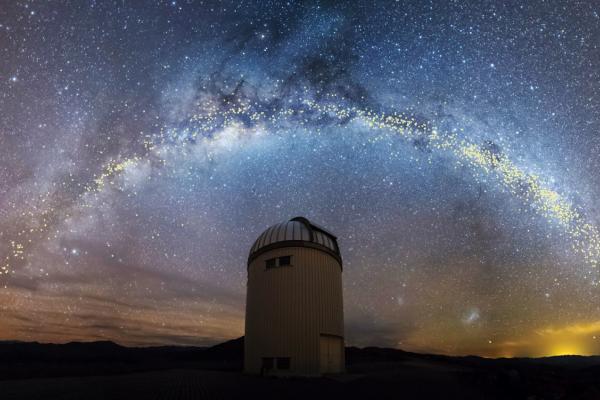August 1, 2019
New 3D Milky Way Model Shows Details of Galactic Warp

(Originally posted http://news.osu.edu)
Model created using more than 2,300 stars — the most comprehensive of its kind to date
An international research team has built the most in-depth 3D model of the Milky Way galaxy to date, using light from thousands of stars.
Their report, published today in Science, shows greater detail of the Milky Way’s “warp.”
“The problem astronomers have typically had in studying the Milky Way is that, because we reside in it, it is hard to see the parts that are far away — we cannot move outside the galaxy and look at it,” said Radek Poleski, co-author of the study and a postdoctoral astronomy fellow at The Ohio State University. “What we were able to do in this study that hasn’t been done before is to take a very large sample of objects — uniformly selected and organized — to build a model of the Milky Way galaxy.”
For years, astronomers thought the Milky Way was a disk-like spiral, with stars arranged in long, sloping branches, on one flat plane. Last summer, this team presented its findings to a group of astronomers, showing a slight warp in the galaxy, giving researchers their first indication that the galaxy might not be a perfectly flat disk.
The study published today shows more details: The warp, it turns out, is more pronounced than astronomers first believed.
The international team behind this study mapped more than 2,300 classical Cepheid stars using data from multiple survey telescopes. Classical Cepheid stars are young by star standards — less than 400 million years old — and are super-giants, burning very brightly. Because of that, they are ideal objects for astronomers to use to track distance and changes in space.
The research team, which is based in Poland, has deep connections to Ohio State: In addition to Poleski, the two lead authors, Dorota Skowron and Jan Skowron, and another co-author, Szymon Kozlowski, are former astronomy postdoctoral fellows at Ohio State.
The team mapped the classical Cepheids in the Milky Way primarily using star images from the Optical Gravitational Lensing Experiment (also known as OGLE) and the All-Sky Automated Survey for Supernovae (ASAS-SN for short), which is led by Ohio State and is made up of small telescopes around the world.
When the research team began mapping out the stars, they saw a significant warp developing at the edges of the Milky Way. The farther stars were from the galaxy’s center, the more extreme the warp.
The findings add to astronomers’ understanding of the structure of our galaxy and provide new insights into how the galaxy formed.
“It’s an important link to knowing which stars have formed and how they’ve evolved, and what constraints might be on where life can start and evolve,” Poleski said. “It’s one of the oldest questions humanity asks: You go outside, you see some stars, and you wonder what our place is in that universe. And many of the stars you see are in the galactic disk — what we are studying in this work.”
